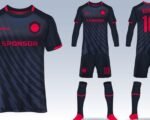He thought 2024 was the turning point. It was—but not in the way anyone expected.
Just weeks after Daniel Roberts stormed to a silver medal in the 110-meter hurdles at the Paris Olympics, he got a call. Not to congratulate him. But to let him know he no longer had a sponsor. Nike, his gear and shoe partner for the past five years, wouldn’t be renewing his contract.
A Contract Year That Seemed to Sell Itself
The timing couldn’t have been worse—or more ironic.
Roberts, now 27, had been riding a high. He clocked a lifetime best of 12.96 seconds at the U.S. Olympic Trials, then followed it with a gutsy run in Paris that landed him on the podium. He ended the 2024 season with the third-fastest time in the world. On paper, everything screamed “renewal.” Or at least a chance to renegotiate. That was the hope.
“I thought I had done enough,” Roberts told people close to him, after finding out Nike wouldn’t pick up his option year. “I ran my heart out.”
He wasn’t a rookie anymore. After a steady climb since turning pro in 2019, his silver in Paris was supposed to cement his place among the sport’s elite.
Not All Medals Are Equal in the Sponsorship Game
Track and field, unlike football or basketball, doesn’t always reward performance. It’s about moments, markets, and visibility.
For sprinters and hurdlers, that means more than just medals—it means headlines, Instagram followers, and sometimes, being in the right race at the right time.
Roberts, despite his fast times, has never been a flashy personality. He’s quiet, focused, and lowkey. That can work against athletes in a sport starved for attention.

The business side of track is notoriously brutal. Even Olympic medals don’t guarantee security. The shoe deals are often loaded with incentive clauses, bonuses tied to rankings, medals, and world records. Guaranteed money? Rare, and getting rarer.
One agent familiar with the negotiations said companies are slashing base contracts across the board.
“It’s not personal,” the agent said. “It’s just math.”
The Shoe War Is Shrinking
There’s another factor at play: the sponsorship pool is drying up.
For years, Nike led the way, dominating U.S. track with a bench of athletes that spanned every event. But now, they’re more selective. So are Adidas, Puma, and New Balance. Brands like On and ASICS are more niche.
And fewer brands means fewer options.
-
Nike dropped several mid-tier athletes in 2023 and 2024
-
Adidas pulled back on individual athlete deals and funneled more cash into college NIL deals
-
Puma prioritized sprint-heavy teams like Jamaica over solo American athletes
-
New Balance has focused its investments on middle distance and distance runners
So even if Roberts wanted to pivot, the options weren’t exactly overflowing.
What’s the Market Really Worth for Olympic Hurdlers?
Let’s look at the numbers. Here’s how the sponsorship picture stacks up for Olympic-level hurdlers, based on industry data and athlete interviews:
| Rank/Result | Estimated Annual Sponsorship Value | Notes |
|---|---|---|
| Olympic Gold Medalist | $75,000–$150,000 | May include bonuses from medal incentives |
| Olympic Silver Medalist | $40,000–$80,000 | Often with heavy performance clauses |
| World Top 5 (No Medal) | $30,000–$60,000 | Risk of short-term contracts |
| U.S. Trials Finalist (Non-Olympian) | $10,000–$25,000 | Many supplement income via side gigs |
| Unranked Pro Athlete | $0–$15,000 | Relies on prize money or outside work |
Even with a silver medal, Roberts would likely be closer to the middle of the range—unless a company saw long-term marketing potential.
That’s the tough part. Because in today’s landscape, performance alone often isn’t enough.
He’s Not the Only One Feeling the Pressure
Roberts’ story isn’t unique.
Over the past 18 months, several high-performing American track athletes have been dropped, even after seasons filled with personal bests and international medals. The reasons vary: marketing fit, age, social media presence—or just budget cuts.
For many, it feels like a cruel twist.
A veteran decathlete told Bloomberg, “The better I got, the less they paid me. I thought winning meant security. It doesn’t.”
For athletes, the emotional whiplash is real. One moment you’re on a podium with the flag draped across your back. The next, you’re asking your agent if it’s time to look for a part-time job.
Life After the Swoosh
Since parting ways with Nike, Roberts has quietly continued training in North Carolina. He’s still competing in 2025. He’s showing up to Diamond League meets. Running in European circuits. Wearing generic gear for now.
People close to him say he hasn’t lost his edge. If anything, they say, he’s more motivated than ever.
There’s also been outreach. Smaller brands have sniffed around. One apparel startup reportedly offered a short-term incentive-based deal. He hasn’t taken anything yet.
Still, there’s no denying the gap.
“I’m not bitter,” Roberts said recently in an off-record conversation shared by a training partner. “But it does make you rethink what all this is for.”
The Athlete’s Dilemma: Greatness Without Guarantees
For every Noah Lyles or Sydney McLaughlin-Levrone—with global endorsements and media deals—there are dozens of athletes like Roberts.
Talented. Focused. Accomplished.
But in a sport that’s losing financial ground and TV time, even an Olympic medal isn’t a golden ticket anymore.
And that’s the hard truth facing track and field in 2025: sometimes, you can do everything right, and still get left behind.








